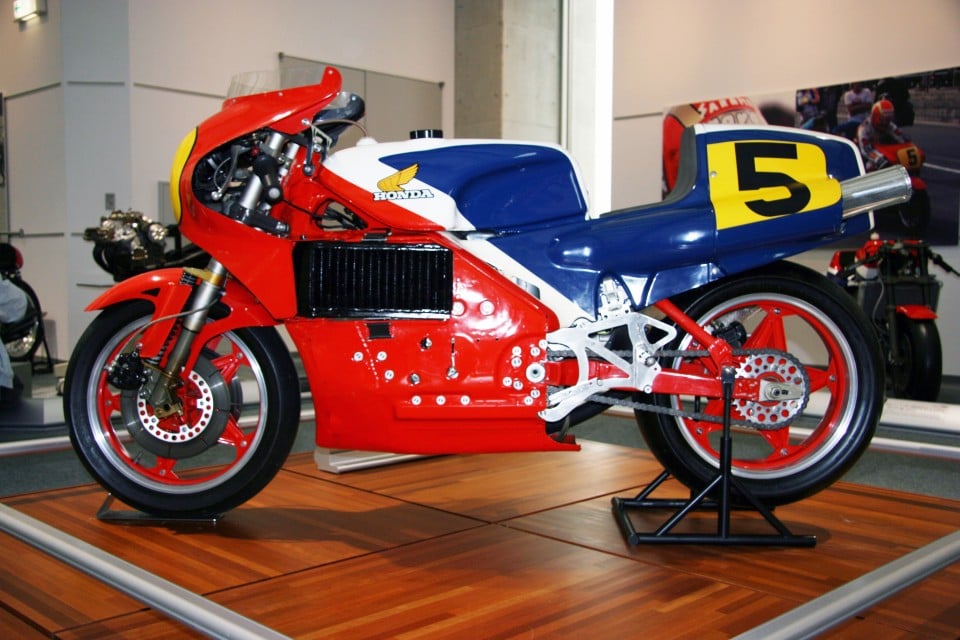Next season will be a great one from a sporting point of view, there's no doubt. The curiosity that has been generated by Marc Marquez's move to Ducati, albeit a satellite of the Gresini team, is more than sufficient to certify it.
There are those who have said it openly, like Martin, and those who have said it covertly, respecting his role as reigning champion, like Bagnaia, but all the protagonists of the last few seasons are just waiting to compete with the one who, rightly or wrongly, is considered the best rider of the last 10 years.
2025 will be fantastic, therefore, for those who wish to deserve the honours of champion, or whatever you want to call the rider who at the end of the season will deserve the number 1...unless, of course, it is not exactly the number 93. Even if we consider it unlikely. Not so much because Marc, at the age of 30, finds himself in the same position as Eliud Kipchoge, the 39-year-old marathon GOAT recently dethroned by the 2h00m35s of the 24-year-old Kelvin Kiptum, but because in motor sports the vehicle also counts a lot.
In any case, it will be a fight to follow attentively, one in which the young lions risk losing more, without any excuses, than the old - so to speak - leader of the pack who has returned after years of battles and injuries.
We will see. And then after 2025 there will be an adjustment in 2026 and, depending on the outcome of the battle, a further rekindling of interest or a weakening of it. The fact is that the truly critical year for MotoGP will be 2027 with the arrival of the new regulations of which some rules have already been leaked, such as the reduction of the engine size to 850 cc, but which will have to be disclosed soon and, in its entirety, if Dorna and the FIM really want to attract new competitors.
These days I'm reading Yoko Togashi's nice book, 'One Day We Will Win' which tells the behind-the-scenes story of Honda's return to racing competition in 1979, with the futuristic project of the NR 500 four-stroke with oval pistons.
Here, 2027 will truly be a watershed for the world championship because, with the new regulations in hand, next year a new manufacturer will have to decide whether to enter or not, whether to risk going all in, without worrying about cutting a possible bad figure, as Honda did, then reaping the benefits in 1983 with Freddie Spencer and his three-cylinder 2-stroke or wait. But wait for what?
Currently the premier class of the world championship needs someone to throw down a gauntlet to Ducati, as Honda did in 1979 challenging its Japanese sisters Suzuki and Yamaha who dominated with two-stroke engines. It was a real challenge, ideological even before sporting. And the fact that Honda lost it, then having to also fall back on the two-stroke, does not take anything away from that epic story. Because then, precisely, it came back to win.
Now the issue is more complex because we fear that within the boards of directors of the big manufacturers, decisions are made more for economic and marketing reasons than ideological-sporting ones. But that's the big mistake.
We, as fans-enthusiasts, want to witness the great challenges that not only concern the riders, but also the manufacturers who must take the responsibility of taking risks.
Eight Ducatis, four KTMs, Aprilias, Hondas and only two Yamahas, destined to probably double at the expense of Ducati in 2026, are not enough. It's not a question of names: we want to see someone really throw down the gauntlet. Expose yourself.
As Aprilia basically did with its 'Cube' project, the three-cylinder RS3 from Noale.
In short, we want someone who ideologically risks something new, who doesn't just come with a more powerful V4 engine, even if only 850 cc, or more refined aerodynamics. We want something that makes our mouths open in wonder.
For some time now there has been talk of the possible entry of MV Agusta into the world championship. Stefan Pierer, CEO of Pierer Mobility AG and KTM AG, currently owns 25.1% of MV Agusta Motor and will take over the majority of the shares in 2026. Pierer is weighing up the possibility of promoting the glorious MV Agusta brand (38 riders’ world titles, 37 world manufacturers’ titles) in the MotoGP World Championship in 2027 with its own development, he told Speedweek.
"Yes, I can't rule out the possibility that MV Agusta will enter MotoGP as its own brand in 2027."
It would be wonderful, if only it weren't, obviously, a purely marketing operation, like showcasing the GASGAS brand on the fairings of Hervé Poncharal's Tech 3 team, given that those bikes are KTM RC16s in all respects.
Because what’s the point of having another clone on the starting grid, even with a glorious brand?
Historically it wouldn't even be anything new given that in the past we have seen everything: from the Minarelli 125 which became Garelli in 1982, up to the world champion Gilera 250 in 2008 with Marco Simoncelli, which was 100% an Aprilia.
So, one of two things: either one of the brands present decides to do something new and revolutionary - regulations permitting, because the levelling-out wanted by Dorna is now showing the other side of the coin - or those who aren't there decided to come in.
The name that often comes up is BMW, but also the growing Chinese industry. In short, anyone willing to risk their image with a truly innovative project.
Unfortunately, we tend to agree with Wiesinger who reports the opinion of KTM engine designer Kurt Trieb: “The way I see it, in 2027 there will only be four-cylinder bikes with a defined bore on the starting grid. Three-cylinder engines are therefore out of the question, although such a concept would be technically interesting."
But who is to blame for this levelling-out? Obviously, the current regulations which by virtue of a hypothetical reduction in costs does not allow for inventiveness, which is not the only one that has not been regulated in time: that of aerodynamics!
So, let's throw away the bore limitation, which moreover risks being a boomerang with the reduction in displacement, and let's liberalize a bit: number of gears, number of cylinders. Costs will not increase. The costs depend on the budget and in racing, whoever invests more, then better, will always win. In that case, we might as well introduce a budget cap.
I know, this is a concept that motorsport no longer wants to embrace, but it is the reason for its existence: innovation!
Today the only innovations we see that are instrumental to victory are mechanical lowering devices and aerodynamics: as a motorcyclist will they make me enjoy my future bike? No, or at least, only if I decide to take the bike to the bar to be admired by the wannabes.
This is what deserved to be said and written. Let's give the term 'prototype', as established by article 2.4.1 of the FIM regulations, its true meaning. A unique piece, which cannot be replicated in large numbers. Something difficult to get the best out of and take to the max. Not something neutered that everyone, or almost everyone, can take to the limit.
Let's take off the chains (metaphorically), of MotoGP.










